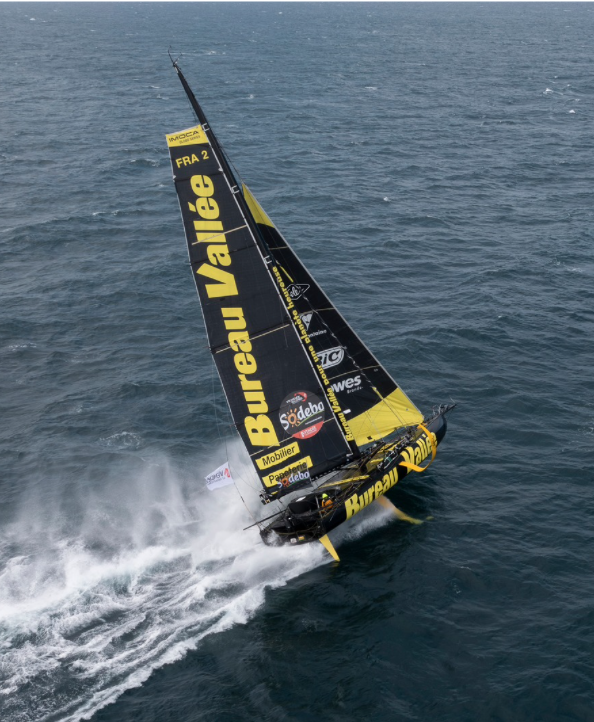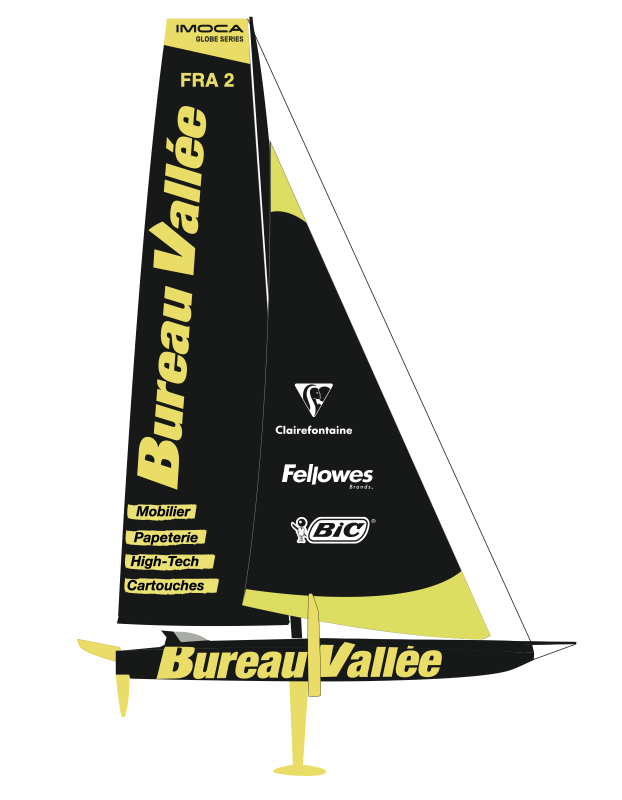Presentation
Entrusting Sam Manuard with the design of his IMOCA, Armel Tripon really packed a punch: L’Occitane en Provence bore no resemblance to her ‘playmates’ with her scow bow, her moderate beam and her raised foils…
Indeed, the naval architect had already designed racing yachts in other classes with increasingly wide bows, culminating with a scow bow. L’Occitane en Provence is a radical introduction to the Imoca class in this regard. Built at Black Pepper Yachts, the monohull hit the water in early 2020, before having her foils installed at the end of the winter.
The performance seems to match up to the project’s ambitions and, significantly, the IMOCA is pretty dry, which is a definite advantage for a singlehanded round the world race. Sam Manuard, who’d already collaborated on the design of the foils for Maître CoQ (turned Initiatives Cœur), has totally revised the siting of these appendages, which exit the hull at the sheer in contrast to the other monohulls. After retiring from the Vendée Arctique Les Sables d'Olonne, Armel Tripon revealed the full potential of the boat in the Vendée Globe 2020-2021. Despite an 11th place, notably due to a hook problem at the beginning of the race (he was lying in 32nd place in the Bay of Biscay), L'Occitane en Provence showed that the latest generation foilers are formidable in fairly mild sea conditions, posting the best time of the fleet in the Southern Ocean, and covering 28,315 miles on her circumnavigation of the world at an average speed of 13.93 knots.
At the end of the Vendée Globe, Louis Burton, who secured third place in the event, set his heart on the Manuard design. In her new colours, she finished 5th in the The Ocean Race Europe, her race debut, but suffered a dismasting just ten hours after the start of the Transat Jacques Vabre with co-skipper Davy Beaudart. After a lengthy winter refit, Bureau Vallée 3 finished second in the Guyader Bermudes 1000 Race and 5th in the Vendée Arctique Les Sables d’Olonne.
The 2022 season did not end well for Louis Burton, as he dismasted again during the Route du Rhum. This came as a shock to the skipper and his technical team, who invested a great deal of time in understanding the cause of the damage and the improvements to be made. This was followed by a new, lengthy refit: changes to the sails, computers and electronics, a reduction in the vibration of the foils at high speeds, from 33-34 knots, and a modification to the bow which had already been planned.
Re-launched at Port-La-Forêt, the boat returned to its home port of Saint Malo a few weeks before the Rolex Fastnet Race, where the Burton-Beaudart duo finished 10th, a very fine position given the IMOCA field. Louis and Davy will be taking part in all the races this year, with the aim of continuing to learn about this extraordinary flying machine.
In 2024, Louis returns to solo sailing with the Transat CIC, which he finishes in ninth place, hindered by significant water ingress caused by a collision with a log.
In October, Bureau Vallée lines up for its second Vendée Globe. But the race doesn’t go as planned: Louis discovers cracks on the deck of the boat, around the gennaker spreader, potentially compromising the structural integrity of his IMOCA. After spending hours attempting repairs, the skipper is ultimately forced to retire from the race and sets course for Cape Town.



